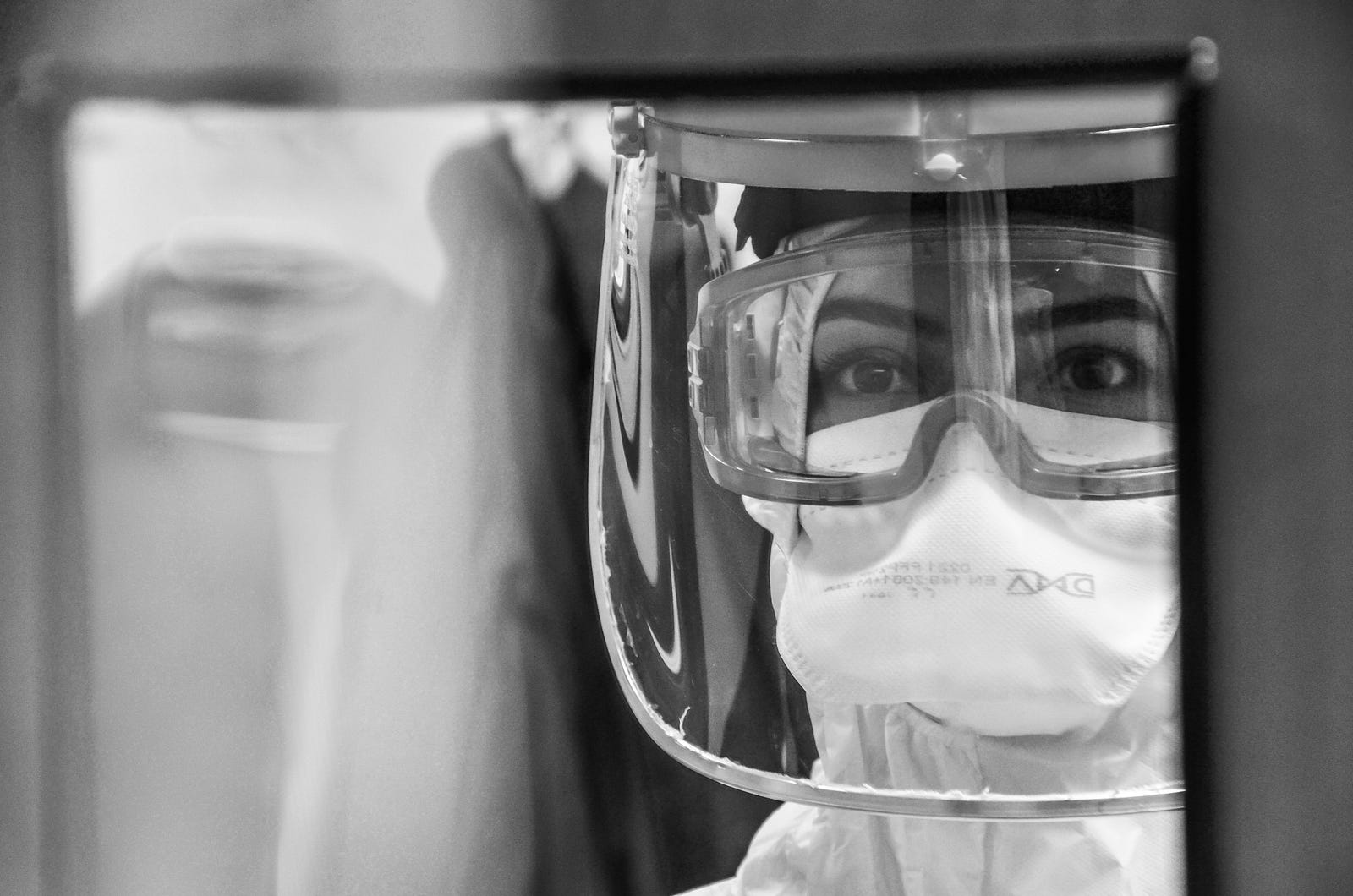INDIVIDUALS WHO TOOK THE ANTI-VIRAL DRUG PAXLOVID to treat COVID-19 infections were less likely to suffer from a rebound infection than those not receiving the drug, according to a new study. Today I ask myself this question: Was I wrong about Paxlovid and Covidrebound?
When President Joe Biden received a COVID-19 infection diagnosis, he almost immediately began an oral treatment of the anti-viral Paxlovid. Four days after he completed the Paxlovid regimen, the U.S. President tested positive for COVID. Again.
Biden’s case is a high-profile example of the “Paxlovid rebound.” Reports suggest that a minority of those receiving the anti-viral drug will suffer from a re-emergence of the infection.
Today we explore the remarkable drug Paxlovid before turning to a new report suggesting we were wrong. The drug now appears not associated with a higher probability of COVID-19 re-infection.
“O Rose, thou art sick.
The invisible worm
That flies in the night
In the howling storm
Has found out thy bed
Of crimson joy,
And his dark secret love
Does thy life destroy?”
― William Blake, Songs of Experience
What is Paxlovid?
Paxlovid is an anti-viral medication used to treat COVID-19. Its active ingredients are nirmatrelvir and ritonavir, which work together to stop the SARS-CoV-2 virus from replicating in the body.
Paxlovid is designed to be taken orally and is typically prescribed to people with mild to moderate COVID-19 who are at high risk of developing severe illness. The high-risk group can include older individuals, unvaccinated individuals, or other medical conditions ranging from cancer to diabetes.
The drug is not for people who are already hospitalized or require oxygen therapy. Paxlovid was granted emergency use authorization by the U.S. Food and Drug Administration (FDA) in November 2021 and is available by prescription from healthcare providers.
Two of the three pills target COVID virus-specific enzymes and suppress viral replication. The third pill is ritonavir, a drug first developed to help treat HIV/AIDS, which boosts the level of the first medications by slowing their breakdown in the body.

Writing in Scientific American, Davey Smith, the head of infectious diseases and global public health at the University of California, San Diego, observes the following:
“Everything that we’ve done for COVID came out of the HIV playbook, just flat out. That includes the development of vaccines, the development of treatments, how we did the testing, how we did epidemiology.”
Paxlovid is quite effective at reducing severe disease. The initial clinical trials showed the drug cut COVID-related hospitalizations and deaths by 89 percent compared to those who received a placebo pill.
What is Paxlovid rebound?
“Paxlovid rebound” is not a term that is commonly used for the medication Paxlovid. Viral rebound, however, is a potential concern with any anti-viral medication used to treat a viral infection, including COVID-19.
The United States Centers for Disease Control defines Paxlovid rebound as when an individual who, after receiving a full five-day treatment course, has a re-emergence of COVID symptoms or tests positive after an initial negative test.
With this definition, one can have COVID without symptoms, symptoms without virus, or virus with symptoms. The term “rebound” is not particularly accurate, as in virology, a “rebound” means a re-emergence of measurable amounts of a virus.
Viral rebound occurs when the level of the virus in the body increases after being undetectable or reduced by medication. This phenomenon can happen if one stops the medication too soon, if the dose is not strong enough, or if the virus develops resistance.
In the case of Paxlovid, it is important to take the medication as directed by a healthcare provider to reduce the risk of viral rebound.
How common is Paxlovid “rebound?”
The groundbreaking Pfizer clinical trial reported that one to two percent of those receiving Paxlovid tested positive for COVID after the anti-viral course — the illnesses rebounded.
Note that those rebound numbers did not appear statistically different from those who received a placebo.
Despite the growing use of Paxlovid in non-hospitalized patients with mild-to-moderate COVID infection, many case reports have described symptom relapse or re-positive test results shortly after initial recovery or a negative test after a standard five-day treatment program.
Viral burden rebound in hospitalized patients with COVID-19 receiving oral anti-virals in Hong Kong…
During the COVID-19 global pandemic, multiple drugs have been repurposed or developed for the treatment of SARS-CoV-2…www.thelancet.com
A retrospective review of Mayo Clinic patients reported that about one percent of Paxlovid users rebounded, consistent with the Pfizer clinical trial findings.
In May last year, the United States Centers for Disease Control and Prevention issued a health advisory in response to growing worries about the rebound phenomenon. Most cases appeared to be among those with mild illness; additional treatment was usually unnecessary.
The CDC recommends early initiation of Paxlovid for those at high risk of suffering from severe COVID-19.
New data
Researchers performed a retrospective analysis of hospitalized individuals with COVID-19 in Hong Kong. They observed the subjects from February to July 2022 during the omicron BA.2.2 variant wave.
They included adult patients admitted three days before or after a positive COVID-19 test, gathered from Hospital Authority of Hong Kong records. No patients were oxygen-dependent at baseline.
They included adult patients admitted three days before or after a positive COVID-19 test, selected from medical records held by the Hospital Authority of Hong King. No patients were oxygen-dependent at baseline.
Here are the study results:
Those receiving anti-viral agents (such as the drugs contained in Paxlovid) had a similar viral burden rebound rate (five to seven percent) as the control group members (seven percent).
Groups more likely to suffer from a viral burden rebound included the following:
- Immunocompromised patients. They had a higher chance of viral burden rebound, regardless of the anti-viral approach (nirmatrelvir–ritonavir – 7.4 times higher risk; molnupiravir – 3 times higher risk).
- Younger patients (18 to 65). The odds appeared to be 3.1 times higher.
- Patients on steroids had a three to 7.5 times higher risk of a rebound.
- Vaccinated individuals appeared much more likely to experience a rebound than unvaccinated individuals (odds ratio for the latter 0.16).
Viral rebound rates appeared similar between patients with anti-viral treatment and those not receiving an anti-viral agent. Note that the viral burden rebound was not associated with poorer clinical outcomes.

My take — Paxlovid and Covid
While Paxlovid is not a cure for COVID-19, it remains a powerful tool for managing COVID-19 for those at higher risk of severe illness. I often heard that more people in the field were getting rebound than the initial trials suggested.
If your healthcare provider recommends the anti-viral drug, please take it as directed and continue to follow other COVID-19 mitigation strategies (including masking and social distancing).
Viral burden rebound in hospitalized patients with COVID-19 receiving oral anti-virals in Hong Kong…
During the COVID-19 global pandemic, multiple drugs have been repurposed or developed for the treatment of SARS-CoV-2…www.thelancet.com
As scientists continue to learn more about Paxlovid rebound, all the doctors Scientific American spoke with emphasized that they will continue to prescribe Paxlovid to their patients who need it. “We can still use Paxlovid effectively,” Barczak says. “And we can protect one another by masking and testing and isolating when rebound happens.”
The information I provided in this blog is for educational purposes only and does not substitute for professional medical advice. Please consult a medical professional or healthcare provider for medical advice, diagnoses, or treatment. I am not liable for risks or issues associated with using or acting upon the information in this blog.
Thank you for reading “Paxlovid and Covid Rebound.”




